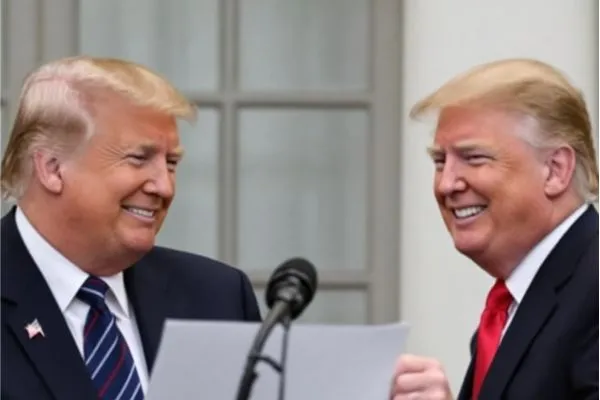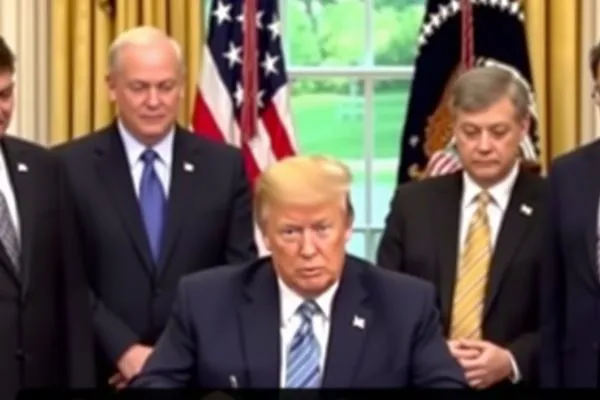President Donald Trump’s recent executive order aimed at eliminating federal diversity, equity, and inclusion (DEI) programs has had far-reaching consequences, affecting dozens of government employees whose roles are not directly tied to DEI initiatives, according to a report by The Washington Post . The order, which seeks to dismantle offices and positions dedicated to promoting diversity in the federal workforce, appears to have been interpreted by some agencies as a broader directive to target individuals who have participated in or expressed support for DEI-related programs.
The Post investigation reveals that at least 50 employees at the U.S. Department of Education were placed on administrative leave after being linked to diversity initiatives, despite holding positions unrelated to DEI. Similarly, around a dozen workers at the Department of Energy and the Office of Personnel Management faced similar actions. These findings suggest that federal agencies may be using the order as a pretext to penalize individuals associated with diversity efforts, even if their primary job responsibilities lie elsewhere.
Trump signed the executive order last week, calling for the elimination of all federal offices and positions related to DEI. Under the directive, all staff working in these offices were placed on paid leave pending the closure of their respective departments. The move reflects the administration’s stance against what it describes as “divisive” ideologies embedded in workplace training programs and initiatives focused on race, gender, and other forms of identity.
What Are DEI Programs?
Diversity, Equity, and Inclusion (DEI) programs aim to create more equitable workplaces by addressing systemic barriers faced by historically marginalized groups, including women, ethnic minorities, LGBTQ+ individuals, and people with disabilities. Advocates argue that such initiatives are essential for fostering inclusive environments where everyone has an equal opportunity to succeed. Critics, however, claim that these programs can sometimes perpetuate division rather than unity.
Civil rights advocates and Democratic lawmakers have long championed DEI efforts, arguing that they address deep-rooted inequities and structural racism within institutions. Opponents, like Trump and his allies, contend that these programs promote divisive ideologies and detract from merit-based practices.
Analysis: Broader Implications of the Executive Order
1. Overreach in Implementation
The Washington Post report raises concerns about how broadly federal agencies are interpreting Trump’s executive order. While the directive specifically targets DEI offices and roles, its implementation seems to extend beyond those parameters. Employees involved in voluntary diversity training sessions or affinity groups—activities often encouraged to foster workplace cohesion—are now facing professional repercussions. This overreach could stifle employee engagement and discourage participation in any activity perceived as supportive of diversity.
For example, placing educators or administrators on leave simply because they facilitated diversity workshops sends a chilling message to federal workers nationwide. It suggests that expressing support for inclusivity—even tangentially—could jeopardize one’s career. Such measures risk creating a culture of fear and self-censorship among public servants, undermining morale and productivity.
2. Political Motivations Behind the Order
Trump’s decision to eliminate DEI programs aligns with his broader political agenda, which frequently frames discussions of racial and social justice as divisive or unnecessary. By targeting DEI initiatives, the former president appeals to his base, which views such programs as emblematic of progressive policies they oppose. However, critics argue that this approach ignores the real-world benefits of diversity initiatives, such as improved workplace dynamics, reduced discrimination complaints, and enhanced organizational performance.
Moreover, the timing of the order is significant. With elections looming, Trump may be leveraging this issue to galvanize conservative voters who share his skepticism toward DEI programs. This strategy risks polarizing an already fractured electorate further, making meaningful dialogue on issues of equity and representation increasingly difficult.
3. Impact on Marginalized Communities
The dismantling of DEI programs disproportionately affects marginalized communities, who rely on these initiatives to advocate for fair treatment and equal opportunities in the workplace. For instance, affinity groups provide safe spaces for underrepresented employees to connect, share experiences, and seek mentorship. Removing such resources leaves these individuals more vulnerable to isolation and bias.
Furthermore, the absence of structured DEI frameworks makes it harder to hold organizations accountable for discriminatory practices. Without clear guidelines and oversight, instances of harassment or unequal treatment may go unaddressed, exacerbating existing disparities.
4. Legal and Ethical Questions
Placing employees on leave based on their involvement in diversity-related activities raises serious legal and ethical questions. Could these actions violate anti-discrimination laws designed to protect workers from retaliation for participating in protected activities? Additionally, does targeting individuals for their beliefs or affiliations infringe upon constitutional rights to free expression?
Legal experts warn that overly aggressive enforcement of the executive order could lead to lawsuits challenging its legality. If successful, such cases might reinstate affected employees and force agencies to adopt narrower interpretations of the directive.
Looking Ahead: What’s Next for Federal Workforce Policies?
As the fallout from Trump’s executive order continues to unfold, several key developments are worth monitoring:
- Public Reaction : Civil rights organizations, labor unions, and advocacy groups are likely to mount campaigns opposing the order. Public pressure could influence how strictly—or leniently—agencies implement the directive.
- Congressional Response : Lawmakers critical of the order may introduce legislation to restore funding for DEI programs or impose limits on how agencies interpret the directive. Bipartisan support for such measures remains uncertain but possible.
- Long-Term Effects : Even if the order is reversed under future administrations, its short-term impact could leave lasting scars on federal workforce diversity efforts. Rebuilding trust and reestablishing inclusive practices will require sustained commitment and investment.
Conclusion
President Trump’s executive order to eliminate federal DEI programs has ignited controversy, particularly as reports emerge of non-DEI employees being caught in the crossfire. While proponents of the order see it as a necessary step to streamline government operations and curb divisive ideologies, critics argue that it undermines decades of progress toward workplace equity and inclusion.
As debates over the role of DEI in public institutions intensify, one thing is clear: the stakes are high for both federal employees and the communities they serve. Whether this policy shift leads to greater unity or deeper division remains to be seen—but its ripple effects will undoubtedly shape the future of diversity in America’s workplaces.










